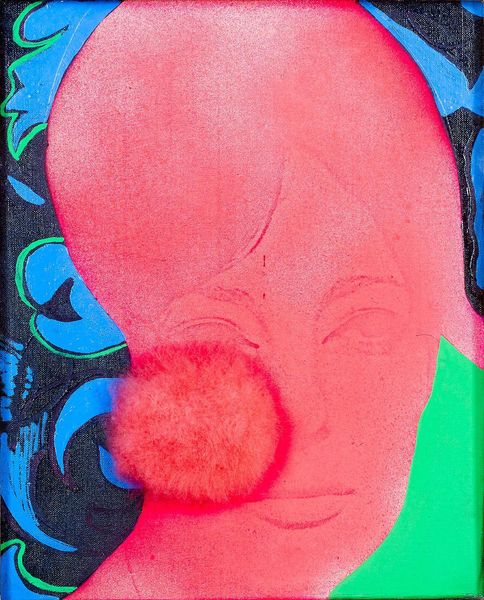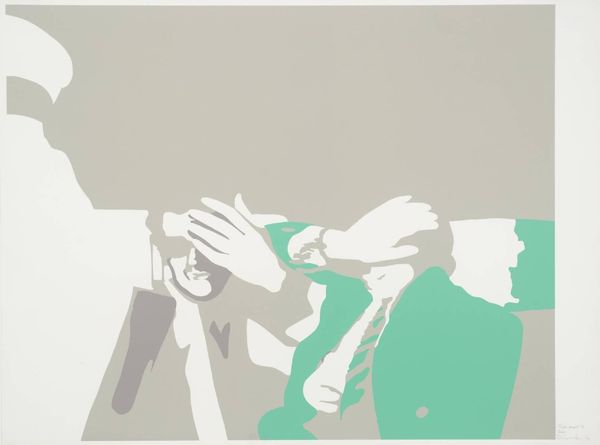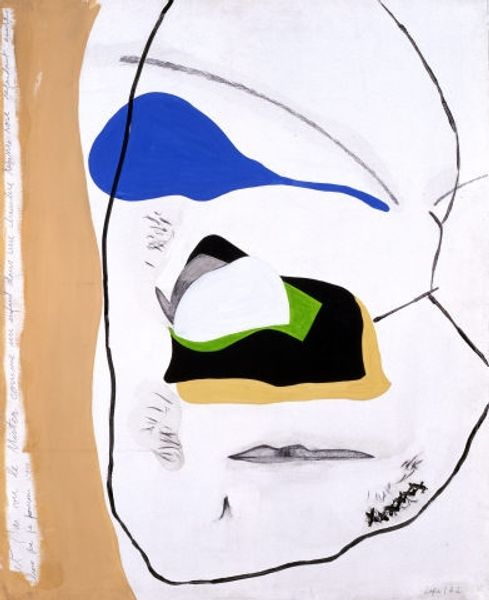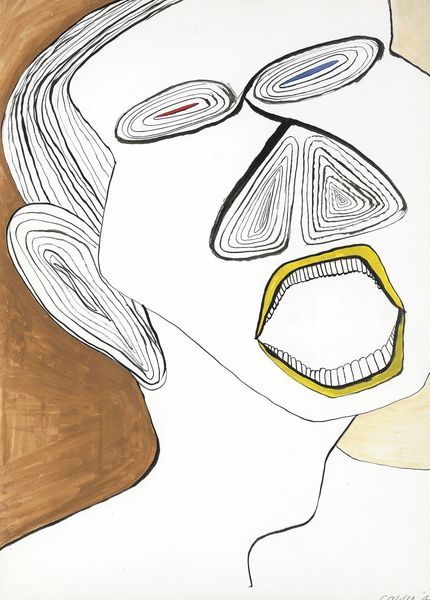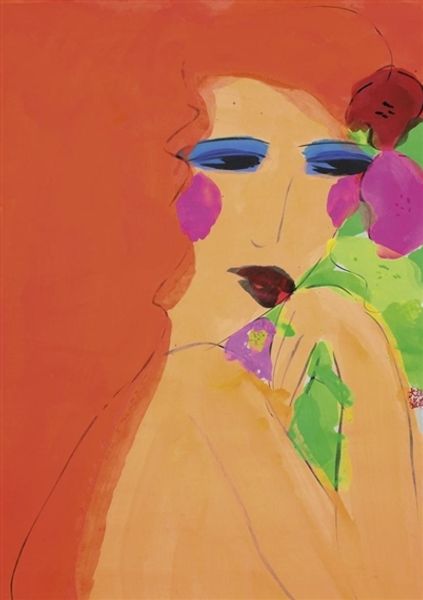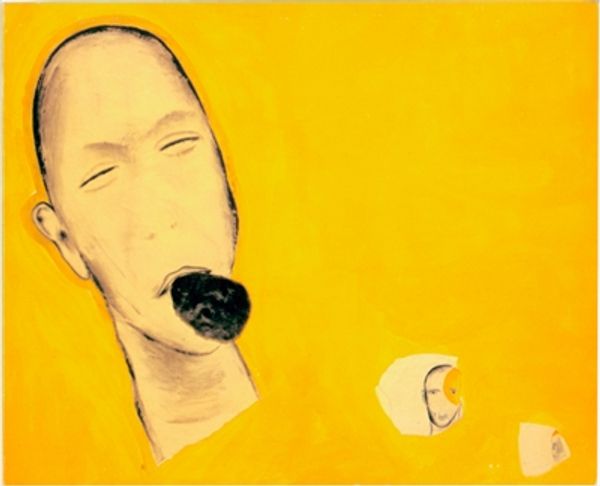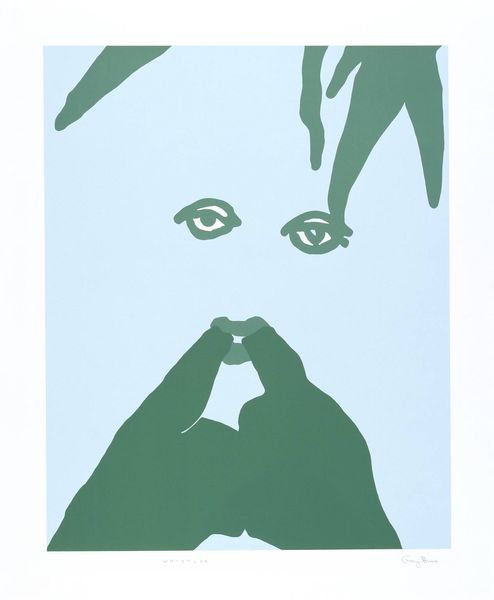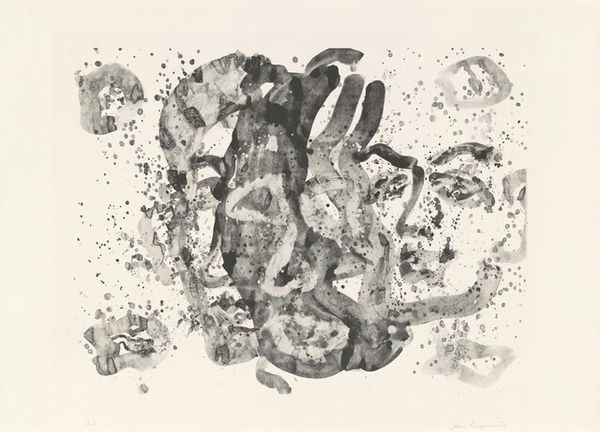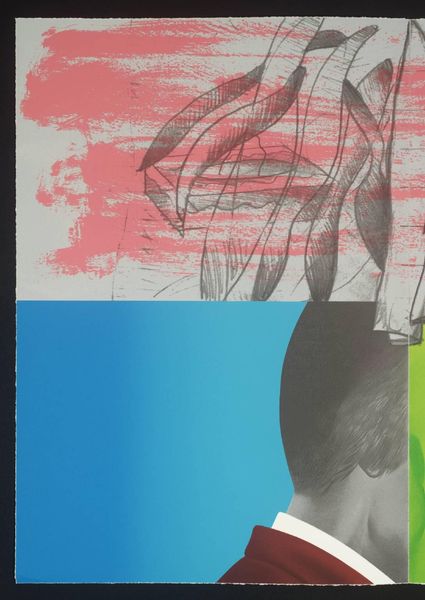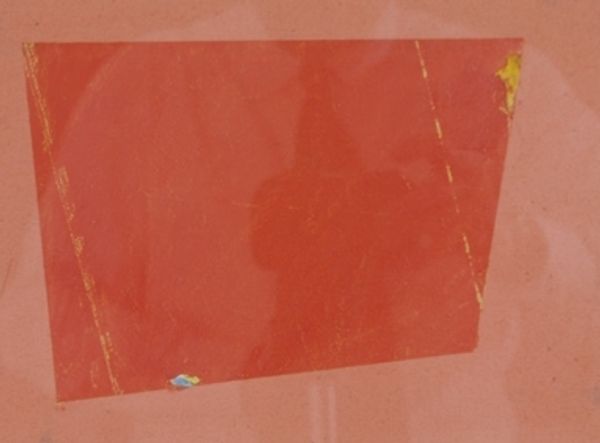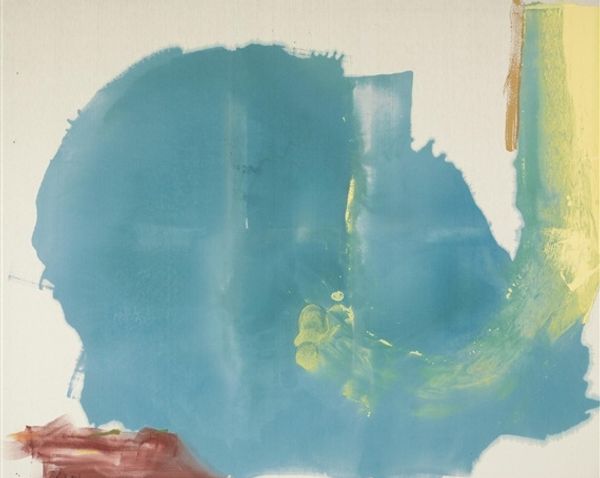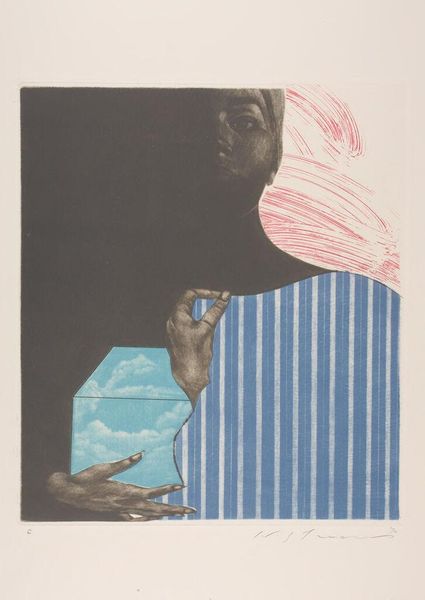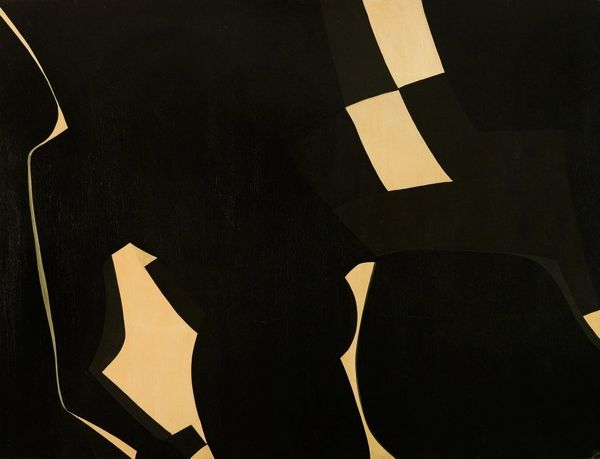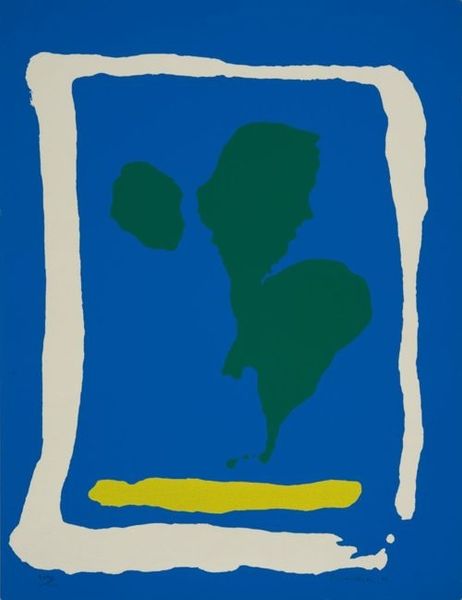
mixed-media, painting
#
portrait
#
mixed-media
#
painting
#
caricature
#
caricature
#
pop-art
Dimensions: overall: 33.02 × 40.64 cm (13 × 16 in.) framed: 33.66 × 41.28 × 3.18 cm (13 1/4 × 16 1/4 × 1 1/4 in.)
Copyright: National Gallery of Art: CC0 1.0
Curator: "C'est Moi," or "It's Me," a mixed-media artwork by Martial Raysse, created in 1964. What are your initial thoughts? Editor: The juxtaposition is immediately striking – a faded figure contrasted by bold color, almost playful despite the somewhat obscured faces. There’s a tension here, perhaps even a commentary on visibility and invisibility. Curator: It's definitely playing with those ideas. Raysse was engaging with Pop Art's fascination with celebrity culture and the construction of identity. The fading figure you described is almost a ghost of a past persona overshadowed by the more vibrant, ‘present’ self. Note the division of the frame between the faded section and the solid green field containing the person in sunglasses. The subject on the green field is more present and the division emphasizes two separate but linked existences. Editor: That stark green certainly asserts a kind of dominance, doesn’t it? Color, in this case, functions almost as a mask. What symbols might be operating for us here? Are the sunglasses offering more than just literal shade? Curator: Absolutely. Think about the social context of the 1960s – the rise of consumerism, the cult of the image, and the growing power of media. Sunglasses as a symbol represent the construction of image, creating mystery. The title, "C'est Moi", challenges the very notion of who is 'me', asking if that is the figure on the right or a prior image of the left, which is partially removed from view. Who owns this act of image making and consumption? Editor: So, beyond the immediate Pop aesthetic, this artwork reflects anxieties about selfhood in a media-saturated society. There’s an awareness of how identity can be fragmented, commodified, and maybe even lost behind carefully crafted veneers. Curator: Precisely. The faded, sketched-in portrait reminds us of past identities – memories and former versions of ourselves – that are constantly being layered over and altered in our perception of ourselves. I think this is echoed in Raysse's material usage, too – the mixing of media points toward an artist wrestling with what counts as authenticity and image. Editor: A powerful and multi-layered message hidden within this work’s seemingly straightforward, colorful facade. The ghostly visage is still with me...it’s like a half-erased palimpsest. Curator: It reminds us that what we choose to display – our curated image – is never the whole story. And that those forgotten layers, however faint, still contribute to the complex person we present to the world.
Comments
No comments
Be the first to comment and join the conversation on the ultimate creative platform.
